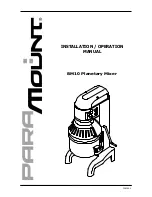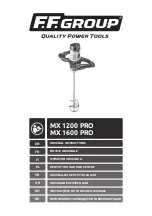
6 Setting up and installation
AL HPM
6.3
Flush tank and axial face seal
The flush tank and axial face seal can be operated in two ways:
1. Closed-circuit type with a defined volume of barrier fluid
2. Flushed type, where fresh water flows through the axial face seal and then into the gully (0.25-0.5 L/minute).
In order to guarantee the necessary circulation of the barrier medium through the axial face seal, the hoses have to be correctly
connected to the barrier medium tank.
The barrier medium used should have the following characteristics:
-
low viscosity (similar to water, approximately 1 mPas)
-
good lubrication capability
-
good thermal conductivity
-
product neutrality
Water with a 5% addition of glycerine or glycol is used as the barrier medium as standard.
The barrier fluid should reach the middle of the sight glass. At this level, the fill corresponds to approximately 0.7 litres.
It only usually has to be replaced if it becomes polluted.
After filling, the circuit and the axial face seal in particular should be vented. To do this, undo the return hose on the flush tank
and wait until fluid emerges. Then tighten again.
6.4
Power supply
Since no dangerous movements are accessible on the machine, no emergency stop has been provided.
The machine connection must comply with VDE standards. When the motor is connected to the power supply, check that the
motor voltage, frequency converter and mains voltage correspond.
The motor voltage is indicated on the motor rating plate or the frequency converter data sheet. Details of the frequency
converter are given in the attached operating instructions for the frequency converter.
18
www.sks-online.com
www.sks-webshop.com
















































